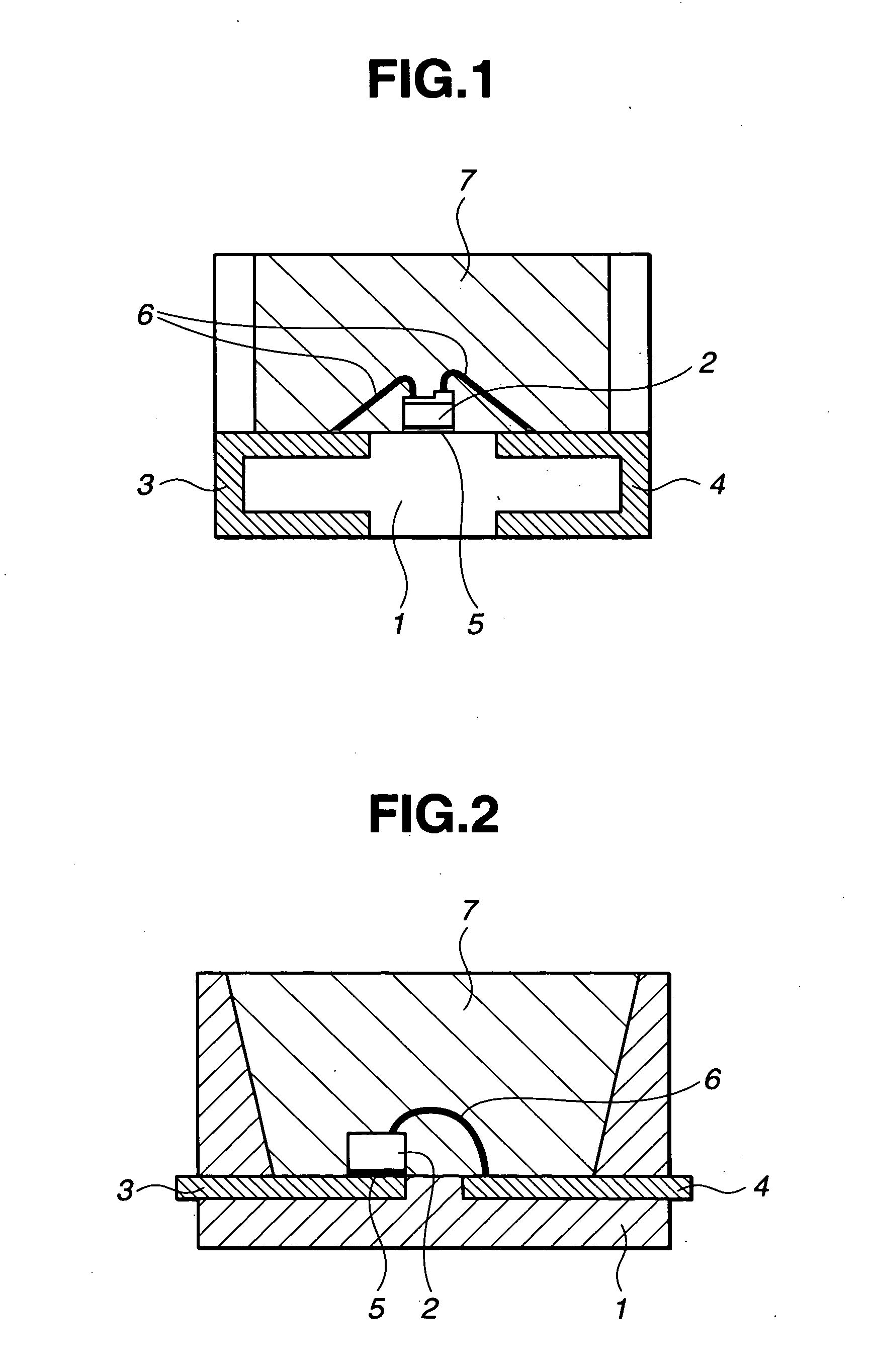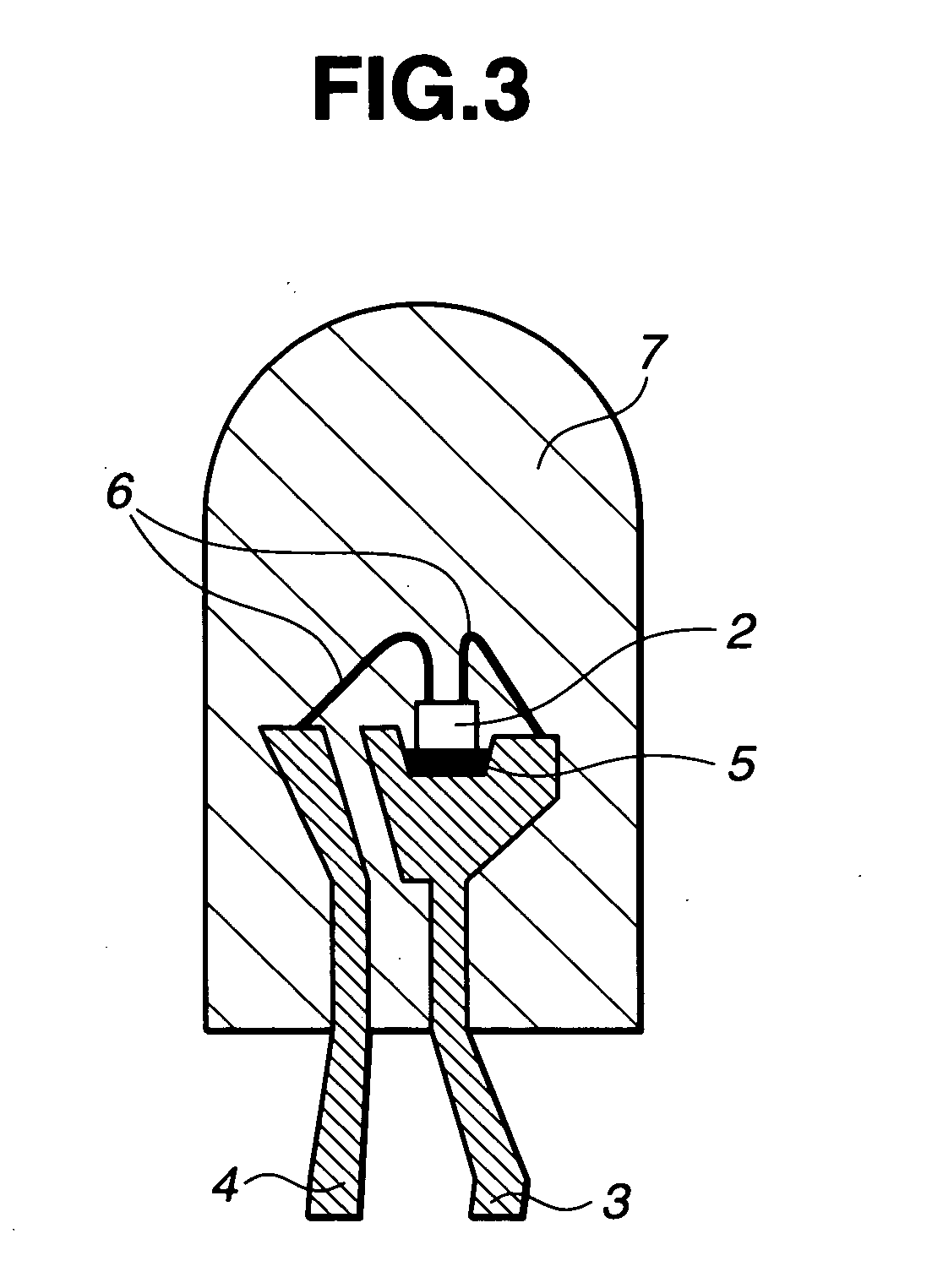Silicone rubber composition, light-emitting semiconductor embedding/protecting material and light-emitting semiconductor device
a technology of silicon rubber and embedded/protected materials, which is applied in the direction of semiconductor/solid-state device details, water-setting substance layered products, chemistry apparatus and processes, etc., can solve the problems of dust deposition, cracking of silicone varnish, and problems of silicone varnish which has solved the problem, so as to improve adhesion and light transmission. , the effect of reducing the tack on the surfa
- Summary
- Abstract
- Description
- Claims
- Application Information
AI Technical Summary
Benefits of technology
Problems solved by technology
Method used
Image
Examples
example 1
A silicone rubber composition was prepared by combining 50 parts of a polysiloxane (VF) having formula (i), 50 parts of a resin structure vinylmethylsiloxane (VMQ) consisting of 50 mol % SiO2 units, 42.5 mol % (CH3)3SiO0.5 units and 7.5 mol % Vi3SiO0.5 units, an organohydrogenpolysiloxane having formula (ii) in an amount to give 1.5 mol of SiH groups per mol of vinyl groups in the VF and VMQ components, and 0.05 part of an octyl alcohol-modified chloroplatinic acid solution and intimately mixing them.
The composition was heat molded at 150° C. for 4 hours to form a cured sample, which was measured for tensile strength, hardness (by Type A spring tester) and elongation according to JIS K-6301. The surface tack of the sample was tested by finger touch. The surface tack was also examined by placing the sample in a cotton dust atmosphere, taking out, and blowing air to the surface to see whether dust deposits were blown off the surface. Separately, the composition was cast into an al...
example 2
A silicone rubber composition was prepared as in Example 1 except that a polysiloxane (VF) having formula (iii) was used. The composition was cured into samples, which were tested as in Example 1. The results are also shown in Table 1.
example 3
A silicone rubber composition was prepared as in Example 1, aside from using 70 parts of VF, 30 parts of VMQ (VF and VMQ containing 0.043 mol / 100 g of SiVi bonds in total), 4.3 parts of the organohydrogenpolysiloxane (containing 0.74 mol / 100 g of SiH groups), and 0.05 part of the octyl alcohol-modified chloroplatinic acid solution. The composition was cured into samples, which were tested as in Example 1. The results are also shown in Table 1.
PUM
| Property | Measurement | Unit |
|---|---|---|
| Temperature | aaaaa | aaaaa |
| Percent by mass | aaaaa | aaaaa |
| Dynamic viscosity | aaaaa | aaaaa |
Abstract
Description
Claims
Application Information
 Login to View More
Login to View More - R&D
- Intellectual Property
- Life Sciences
- Materials
- Tech Scout
- Unparalleled Data Quality
- Higher Quality Content
- 60% Fewer Hallucinations
Browse by: Latest US Patents, China's latest patents, Technical Efficacy Thesaurus, Application Domain, Technology Topic, Popular Technical Reports.
© 2025 PatSnap. All rights reserved.Legal|Privacy policy|Modern Slavery Act Transparency Statement|Sitemap|About US| Contact US: help@patsnap.com



